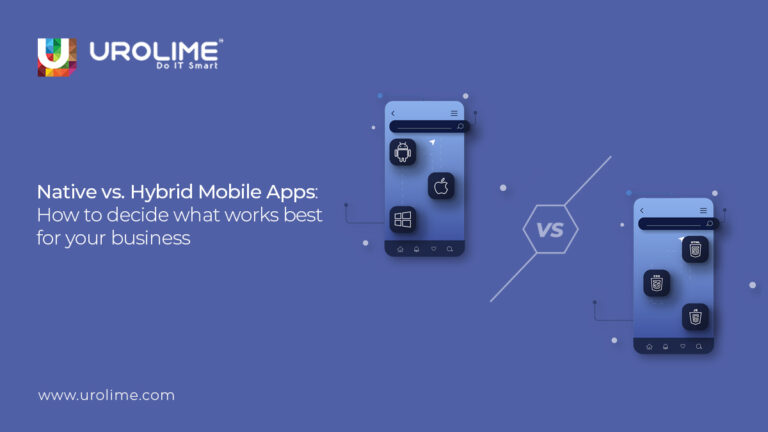If you are at that stage where you’re deciding on how to build an app for your business, you’re likely faced with the inevitable “native app or hybrid app” question. Sure, every page and every business would tell you that both have their advantages and disadvantages and that the choice depends on various factors such as your budget, timeline, target audience, and desired features. But you? You need clarity.
In today’s blog post, we are offering you that clarity by carefully dissecting the differences between native and hybrid mobile apps, their pros and cons, and some tips on how to choose the best mobile development option for your business.
But just so that it’s clear for everyone, let’s start with the basics.
What are native mobile apps?
Imagine native apps to be like your native language newspapers. Regional language newspapers are written in regional languages and cater to a specific audience. Similarly, native mobile apps are applications developed using native development languages and tools specific to each platform. For example, if you’re building a native iOS app, you could use Swift or Objective-C and compile using Xcode. However, for a native Android app, you’ll use Kotlin or Java and compile the code using Android Studio.
Native apps also carry the benefit of features such as access to all of a device’s capabilities, including camera, GPS, contacts, microphone, etc., and provide fast and reliable performance. They also follow platform design guidelines and have a consistent and intuitive user interface (UI).
What are hybrid mobile apps?
Think of hybrid mobile apps like English newspapers. Most of the world knows the language, so it can be used by different audiences. Similarly, hybrid mobile apps are applications developed using web technologies (read: HTML5, CSS, and JavaScript) and wrapped in a native container for use on different platforms. For instance, a hybrid app can use Ionic or React Native frameworks to create a single codebase that can run on both iOS and Android devices.
The striking difference between native and hybrid apps lies in the fact that hybrid apps can only access some of a device’s features (through plugins or APIs). They’re also known to be slower than native apps, as they rely on the device’s browser to render the web content, aside from having a less native look and feel, as they use web elements instead of native UI components.
Pros and cons of native vs. hybrid mobile apps
Walk through some of the main advantages and disadvantages of native and hybrid mobile apps below:
Native mobile apps
Pros
- Best performance + user experience: Because they are optimized for each platform and can leverage all the device’s capabilities.
- Latest features + platform updates: Because they use native development tools and languages.
- Higher quality + security standards: Because they have to pass through each platform’s app store review process and follow their rules and restrictions before being accepted on them.
Cons
- More time + resources for development: Because they need separate codebases for each platform and different skill sets for each development team.
- More expensive to maintain and update: Because they need to keep up with each platform’s changes and requirements.
- Platform dependent: They have to follow every platform’s app store distribution and approval process, which can limit their availability and reach.
Hybrid mobile apps
Pros
- Faster + cheaper development: Because they use a single codebase that can run on multiple platforms and require a common skill set for web developers.
- Easier maintenance + updates: Because they only need to make changes once in the web codebase and deploy them across all platforms.
- Wider distribution + reach: Because they can be accessed from both app stores and web browsers.
Cons
- Lower performance + user experience: Because the device browser renders the web content here.
- Limited access to the device’s features and functionalities: That too via plugins or APIs that may not be available or updated for all platforms.
- Less native look and feel: Because they use web elements that may not match the platform’s design guidelines/user expectations.
Conclusion
How to choose between native vs. hybrid mobile app development?
Here’s a quick check you can do:
- Is performance your main requirement? Then, go for native app development.
- Is user experience your main requirement? Then, opt for native app development.
- Is development cost and time your main concern? Then, choose hybrid app development.
- Would you like to strictly and easily have app store approval? Then, choose native app development.
- Should your app be able to function offline? Then, choose native app development. Native apps can work offline without any internet connection, as they store the data and resources locally on the device, as opposed to hybrid apps that often need some extra steps to cache the data and resources using web storage or local databases.
If you’re looking for hybrid app development services from a top mobile app development company, please feel free to contact us.
![]()


